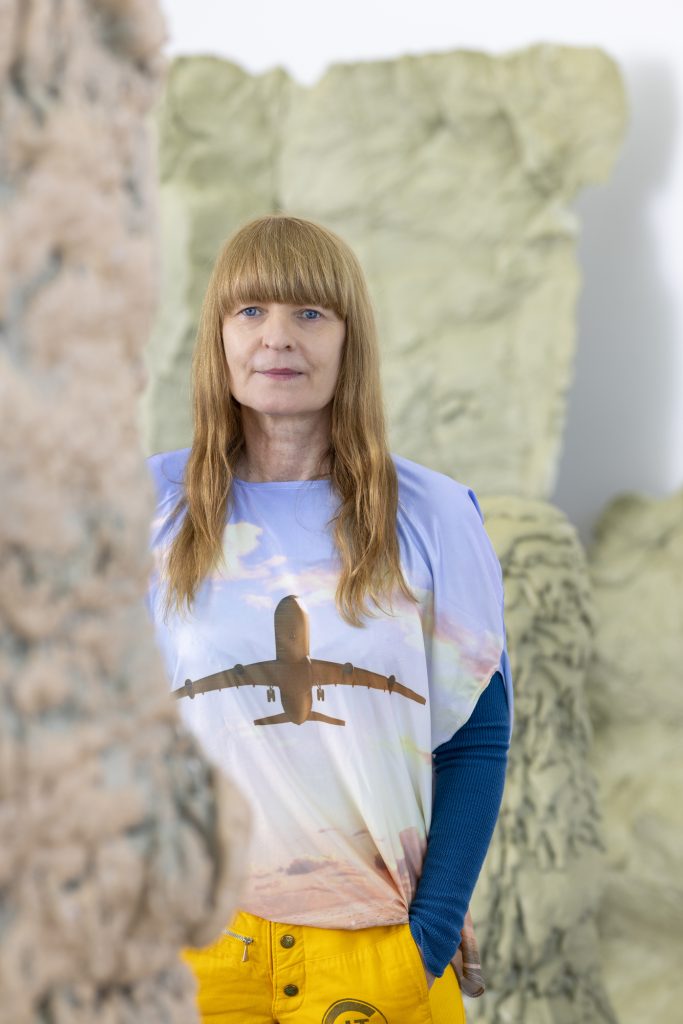
Photography by JASON ALDEN
Goshka Macuga’s art is anything but conventional – it’s a dynamic intersection of history, politics, and culture that challenges us to rethink how we engage with the world. See her work in her latest exhibition, Born From Stone, showing at London Mithraeum Bloomberg Space until 18 January 2025, or in her latest collaboration with MiuMiu for the Tales & Tellers show, where she transforms a fashion runway into a reflective installation about truth, misinformation, and identity. But her vision extends beyond fashion. Whether it’s exploring archival materials or questioning the narratives we accept as truth, Macuga’s work is about creating a bridge between the past and the present, urging us to reconsider our place within them.
hube: Your recent exhibition Born From Stone at Bloomberg SPACE deeply engages with the history and mythology surrounding the Roman Temple of Mithras. Can you discuss how this ancient site inspired your exploration of themes like refuge, destruction, and the primal connection to caves in your installation?
Goshka Macuga: The discovery of the ancient Roman Temple of Mithras beneath Bloomberg’s European headquarters creates an interesting juxtaposition between ancient mythology and the modern hub of wealth and power. In Born From Stone, I explored this intersection by linking the temple’s mythological significance to the City of London’s history of transformation cycles of destruction and regeneration. The temple, along with its associated cave imagery (birthplace of Mithras), provided a framework for examining humanity’s primal connection to subterranean spaces as sites of refuge and creation.
The cave is a recurring motif in Mithraic mythology, symbolising both a sacred origin and a site of transformation. Beyond Mithras, caves hold universal significance, from the prehistoric paintings at Lascaux to post-apocalyptic visions of shelter. Philosophically, Plato’s Allegory of the Cave deepens this metaphor, representing the journey from ignorance to enlightenment – a theme that resonates throughout my practice.
My engagement with caves began in 1999 with an installation crafted from crumpled brown paper at the artist-run space Sali Gia. Revisiting this work for Hollow Earth: Art Caves & The Subterranean Imaginary (2022–2023), I reflected on the experimental spirit of London’s artist-run spaces in the late 90s. These spaces, unconstrained by institutional pressures, were instrumental in shaping my artistic approach.
Caves embody dualities – concealment and revelation, safety and danger, creation and destruction. Through Born From Stone, I aimed to reflect humanity’s enduring fascination with these spaces as both physical and metaphorical.

